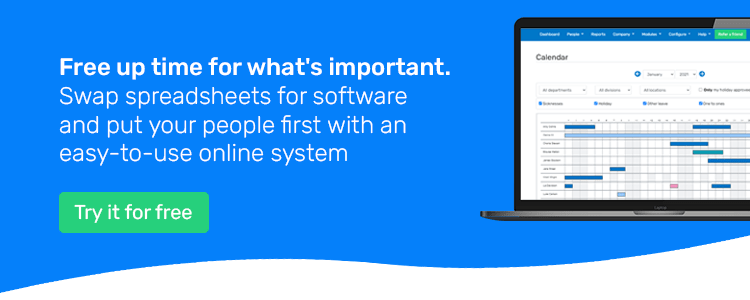Equal pay matters. It’s a legal obligation and a moral responsibility for all businesses, no matter their size.
In today’s competitive job market, with labour shortages across many UK business sectors and the cost of living at an all-time high, it’s more important than ever to ensure your employees are paid fairly.
Carrying out an equal pay review and completing gender pay gap reporting can help create a fair and transparent pay system, sending a positive message about your organisation’s values to your team members and potential candidates, helping you to find and keep talented people.
In this blog, we’ll explore what equal pay means and what Small-to-Medium-Enterprise (SME) employers need to know.
Skip to:
What is equal pay legislation?
Preparing for a gender pay gap review
Communicating pay information to employees
What is equal pay legislation?
Equal pay has been part of UK law since the 1970 Equal Pay Act and is now also part of the Equality Act 2010. It means that all employees are entitled to equal pay, regardless of their gender and whether they are on full-time, part-time, or temporary contracts.
To break it down, equal pay is the legal right for all people of all genders to be paid the same for:
-
Doing identical, or similar, jobs
-
Doing work that has been rated as “equivalent”, or in the same grade
-
Doing work of “equal value”, where jobs might be different but require a similar level of skill
Keep in mind – equal pay doesn’t just refer to salaries. It also includes employee benefits like holidays and pension contributions, as well as company cars and bonuses.
Why equal pay is important
According to the 2024 statistics from the Office for National Statistics, the gender pay gap in the UK stands at around 13.1% for all workers, meaning women earn on average 13.1% less than men per hour.
Paying women less than men has far-reaching implications for society. Not only does it contribute towards the gender pay gap, but it directly impacts women’s lower pension contributions and their higher incidence of relative poverty in later life. In fact, one study shows that 67% of pensioners in poverty are women.
Businesses should also remember that pay is one of the key factors affecting motivation and relationships at work. Employee motivation ultimately contributes to your commercial success, so it’s important to reward all employees fairly.
What is the gender pay gap?
The gender pay gap is the difference between the average earnings for men and women. Gender pay gap data is critical to understanding this disparity, as it includes annual estimates and reporting requirements for employers with 250 or more employees.
The gender pay gap differs to unequal pay which is the difference in earnings between men and women for performing exactly the same job.
How is the gender pay gap calculated?
The Office of National Statistics proposes a straightforward formula for calculating the gender pay gap within an organisation:
"The gender pay gap is calculated as the difference between average hourly earnings (excluding overtime) of men and women as a proportion of men’s average hourly earnings (excluding overtime). It is a measure across all jobs in the UK, not of the difference in pay between men and women for doing the same job."
To determine the gender pay gap, examine a "snapshot" or specific timeframe to accurately assess pay and working hours. The Annual Survey of Hours and Earnings (ASHE) provides valuable estimates tied to specific "pay periods," offering insights into how earnings evolve over time.
Before starting your gender pay gap review, select your snapshot date to capture employee data for calculation. Typically, this occurs around the close of the financial year, commonly on the 31st March or 5th April in the UK. Mark this date to ensure timely data collection.
Preparing for a gender pay gap review
Performing a gender pay gap review and implementing an equal pay plan isn’t necessarily complicated, but it’s important that you complete it accurately and put right any discrepancies that you identify in the process. Remember, at this stage, you’re evaluating the jobs, not the people doing them.
You'll also want to ensure you're evaluating all your different contract types for your equal pay plan to help identify and address any gender pay disparities across all your workers.
Follow this 3-step equal pay plan
Let's take a look at how you can complete your gender pay reporting and equal pay review with this 3-step plan.
Step 1 – Determine whether employees are doing equal work
Begin by making a list of all employees, their genders, job titles and grades and start date and hours of work. If you’re already storing all this information digitally in an HR software system, this step will be much easier. For each employee, include all information related to their pay and the wider benefits they receive, such as overtime, shift pay, bonuses, commission, or any other payments.
Other benefits include holidays, sick pay, company cars, pension contributions and any other form of non-cash benefit. To make like-for-like comparisons easier - especially when comparing the payments of employees who work part-time with those who work full-time - break salary information down into hourly rates.
Statistical data often shows that male employees, especially those in higher earning brackets, have a significantly larger income compared to their female counterparts, so pay attention to any ongoing inequalities in pay across different levels of employment.
TOP TIP: While the changes to UK employment law announced in 2024 don’t directly change the existing legislation on equal pay, there are some things that could impact gender pay gap reporting.
-
Increase Statutory Pay Rates – The government will increase the amount of money people get when they take time off for maternity, paternity, adoption or shared parental leave. This might lead to more parents sharing childcare responsibilities, resulting in changes to the gender pay gap over time.
-
Employment Rights Bill – We’re set to see some amendments to the Employment Rights Bill in 2026 which are aimed at improving job security and work-life balance. These changes may help create a fairer workplace, which could also help close the gender pay gap.
Step 2 – Compare pay between men and women doing equal work
The Equality and Human Rights Commission recommends using a basic table to make comparisons.
| Question | Response | |
| Are the basic hourly earnings the same for men and women doing this job? | Yes | No |
| Are the total hourly earnings the same for men and women doing this job? | Yes | No |
| Do men and women doing this job get the same type of benefits? | Yes | No |
| Are the amounts of the benefits the same for men and women in this job? | Yes | No |
The answer to every question should be ‘yes’. If not, you need to find out what is causing those pay differences. Look out for discrepancies between starting salaries and pay increases. You should also investigate pay differences between full and part-time workers who combine their paid work with any duties of care.
Step 3 – Identify any actions that need to be taken
After identifying any discrepancies, it’s important to start closing any gender-related pay-gaps as soon as possible. Depending on the number of people you employ, you may need to involve line managers to help you understand the finer points related to people’s roles and their duties. The devil is very much in the detail and misunderstanding or overlooking subtle differences could put you on the wrong side of the law, despite good intentions.
Although people may have identical job titles, this isn’t to say that their responsibilities have changed or increased over time, and this should be factored into your analysis and list of actions.
We’d recommend using these steps to carry out an equal pay review every two years to ensure your continued efforts to pay people equally are recorded in detail.
Managing employee information
Using HR software like Breathe to record information about every employee makes maintaining an inventory of job and role information easy and straightforward. Not only will this help you ensure equal pay within your organisation, but it also makes it simpler to find information in the future.
With Breathe's document management functionality, you can also maintain detailed records and store them online securely in a single place for speedy access when needed. And there’s no need to worry about access and visibility, you can set higher permissions so only those you choose can view a document.
Communicating pay information to employees
Currently, only companies* with more than 250 employees have to officially report on their gender pay gaps. But this might change in the future, so it’s smart to be prepared.
If you’ve already achieved equal pay in your business, celebrate the news! Sharing this with employees and partners is a fantastic way to boost morale, boost your reputation as a fair employer and show everyone what you’re all about.
*This includes both private sector companies and voluntary organisations.
Final thoughts
There's still some way to go in achieving gender parity and equality. Research from Acas and YouGov in 2024 shows that more than one third of women believe they do not get the same pay as men at their organisation.
SMEs can move towards gender pay equality by undertaking reviews in their small businesses.
Want to make sure you’re paying your employees equally and managing all their information safely and securely?
Breathe makes it easy to track employee data, store pay records and meet all legal requirements. Try Breathe for free today and see how we can help you manage your people’s data with ease for a fairer workplace.

Author: Laura Sands
Laura is a writer who enjoys getting into the detail of subjects and sharing that knowledge with snappy, interesting content. When not typing away, she enjoys walks in the woods and curling up with a good book and mug of something hot.




